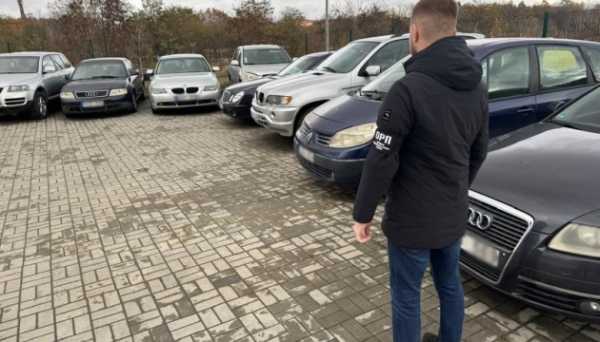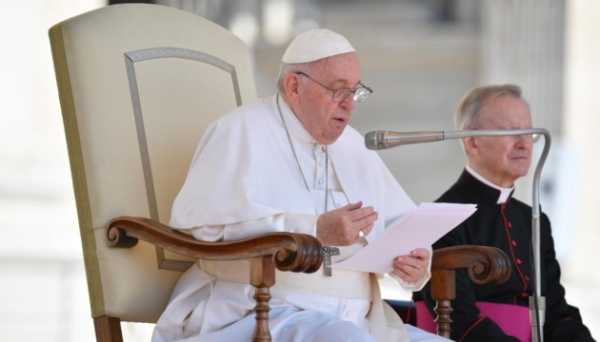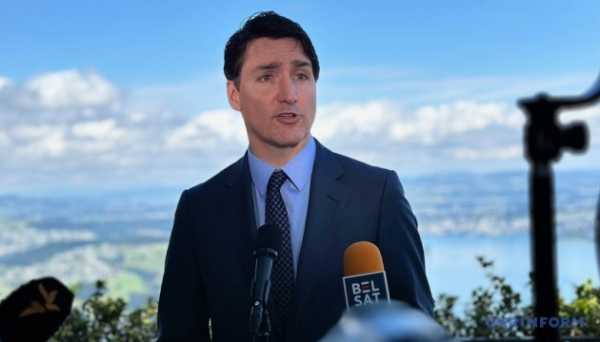The story of two revutions: The struggle for dignity in photos
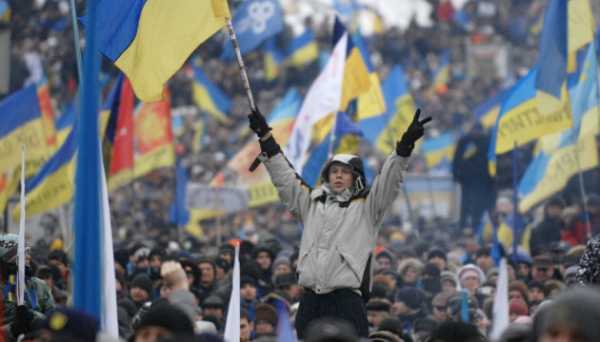
These events were crucial in the history of independent Ukraine and demonstrated the willingness of Ukrainians to unite in the struggle for their free Eurean future.
At the end of 2004, citizens were outraged by massive fraud during the presidential election, when Viktor Yanukovych was announced the winner. Supporters of Viktor Yushchenko, the position candidate, took to the streets to protest.
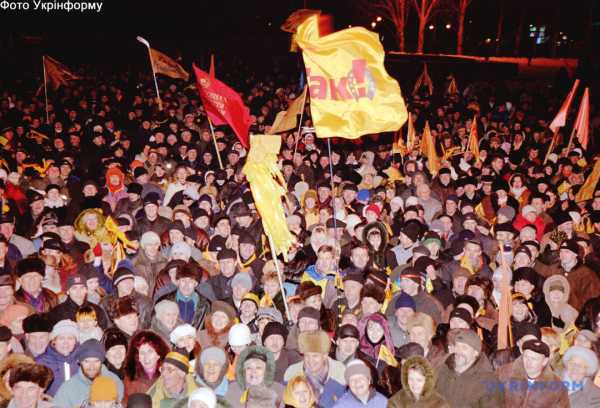
A mass rally of supporters of position leader Viktor Yushchenko on Festivalna Square in the centre of Zaporizhzhia, November 26, 2004. / Photo by Borys Dvornyi

70,000 Kharkiv residents — supporters of presidential candidate Viktor Yushchenko — join an all-Ukrainian protest rally in the streets of the city on November 23, 2004. / Photo by Andrii Avdoshyn
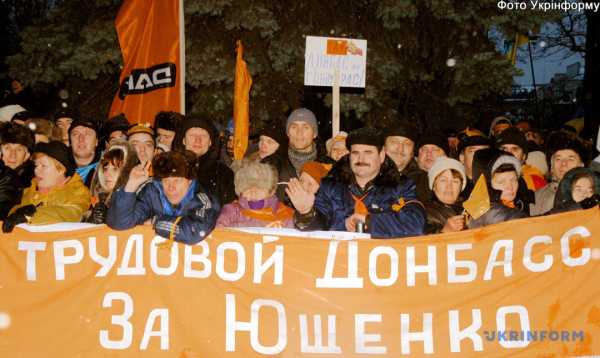
Supporters of Viktor Yushchenko near the Verkhovna Rada in Kyiv, November 27, 2004. / Photo by Vodymyr Tarasov
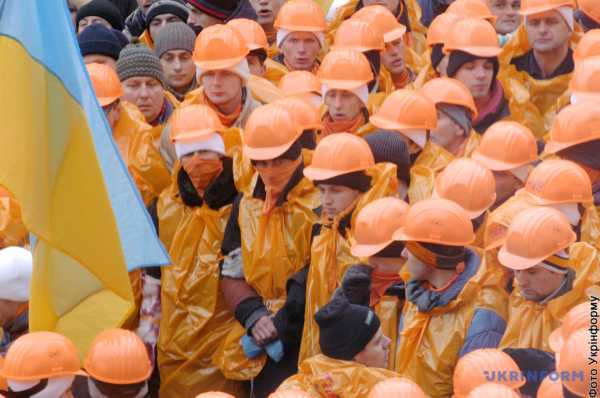
Protesters near the Verkhovna Rada in Kyiv, December 1, 2004. / Photo by Vodymyr Tarasov
The protest movement lasted for a month, engulfing Ukraine’s major cities, with Independence Square in Kyiv as its centre. The crowded gatherings showed the world that Ukrainians were loath to their situation and the way of life that had existed for more than two decades. These events prompted the second round of the presidential election, with Yushchenko winning.

Hundreds of thousands from various regions of Ukraine gather on Independence Square and the surrounding streets, November 23, 2004. Photo by Vodymyr Samokhotskyi
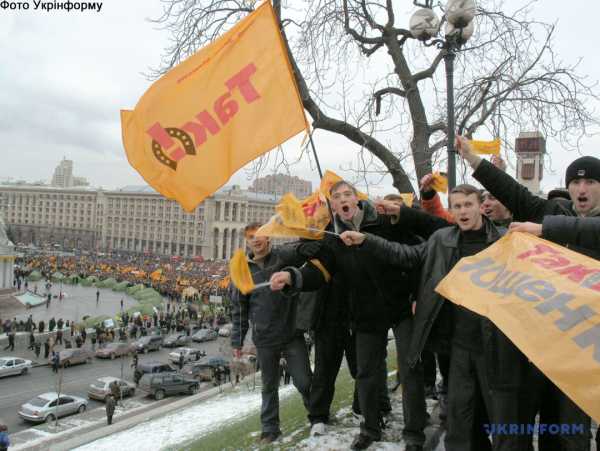
A crowded rally in support of Viktor Yushchenko in the centre of the capital, November 22, 2004. / Photo by Vodymyr Falin
Nine years after the victorious Orange Revution, the government under Yanukovych’s presidency tried to reverse the pro-Eurean vector of Ukraine’s develment. This time, several hundred students and journalists were the first to speak out. A few days later, they were joined by thousands of supporters of Eurean integration. Pele demanded early presidential and parliamentary elections and called on Western countries to impose personal sanctions against Yanukovych and his government.
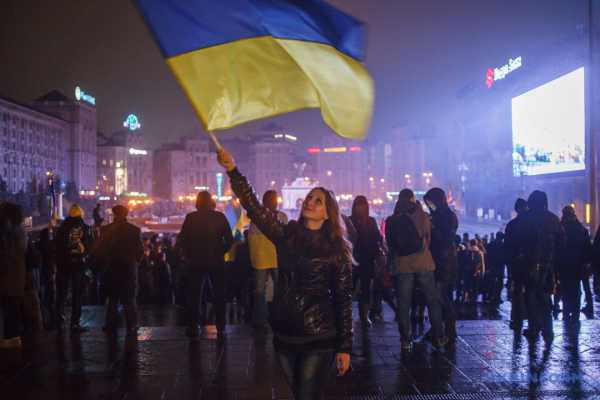
A participant of the protest event by Ukrainians who are outraged by the decision of the Ukrainian Government to suspend preparations for signing the Association Agreement with the Eurean Union hds the national flag, Kyiv, November 22, 2013. / Photo by eksandr Kosmach
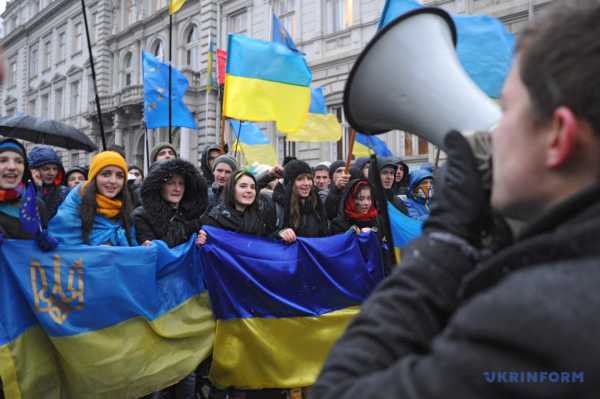
Participants of the rally in support of signing of the Association Agreement between Ukraine and the Eurean Union, Lviv, November 25, 2013. / Photo by Markiian Lyseiko
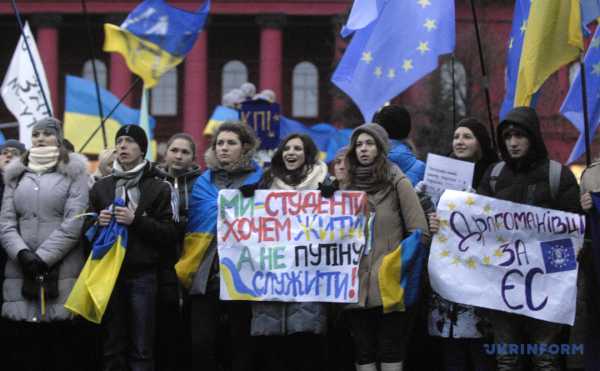
Students of Ukrainian universities during a rally in support of signing the Association Agreement between Ukraine and the EU near the monument to Taras Shevchenko, Kyiv, November 28, 2013. / Photo by eh Petrasiuk
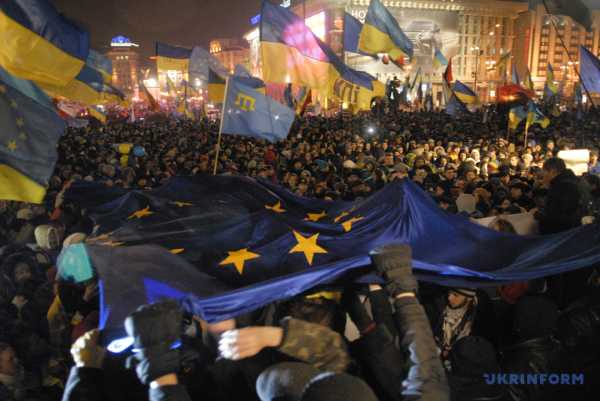
Rally in support of signing the EU-Ukraine Association Agreement, Kyiv, November 28, 2013. / Photo by eh Petrasiuk
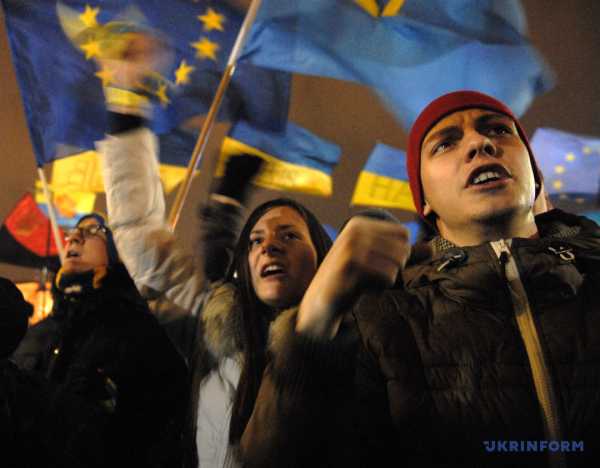
Participants of the rally in support of signing the Association Agreement between Ukraine and the Eurean Union, Kyiv, November 28, 2013. / Photo by eh Petrasiuk
On the night of November 29-30, the Berkut special unit brutally dispersed protesters gathered on Independence Square. Unarmed activists were beaten with pice batons, with students suffering the most. This stunned not only Ukrainians but also the international community and became a turning point in the Ukrainian protests of late 2013. Their focus shifted from pro-Eurean to anti-government. Furthermore, the protests became more widespread.
On December 8, the so-called “Million Man March” took place in Kyiv. According to various estimates, between 500,000 and 1 million pele gathered at the assembly on Independence Square. The Square was filled to capacity.
Euromaidan began to turn into a self-supported entity in the centre of the capital, with checkpoints, barricades, civilian self-defence units called “sotnias,” and a field kitchen.
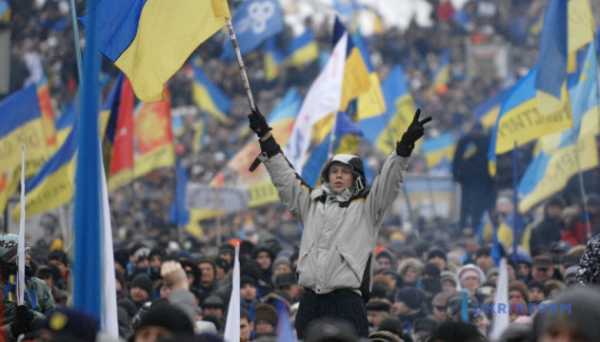
Participants of the pele’s assembly in support of Ukraine’s Eurean integration in the centre of Kyiv, December 8, 2013. / Photo by eh Petrasiuk
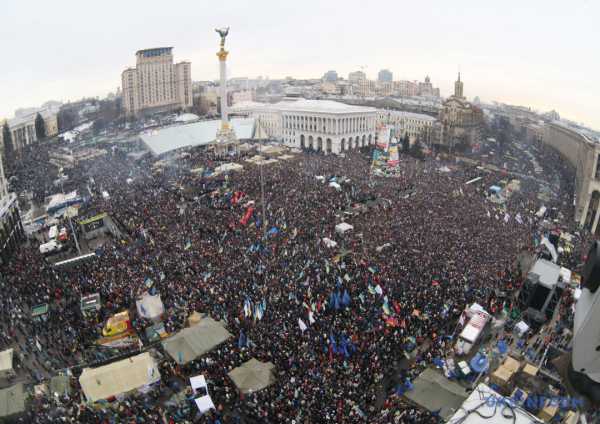
Pele’s assembly on Independence Square, Kyiv, December 15, 2013. / Photo by eksandr Prokenko
Activists came to the central squares of various Ukrainian cities to voice their dissent enly and support the protesters in Kyiv.
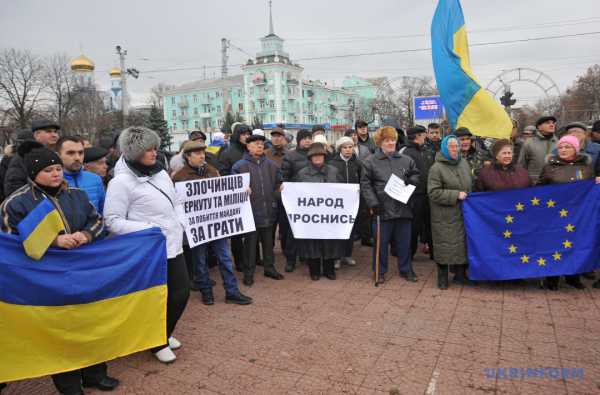
Participants of the rally against the dispersal of protesters in Kyiv, Luhansk, December 1, 2013. / Photo by eksii Kovalov
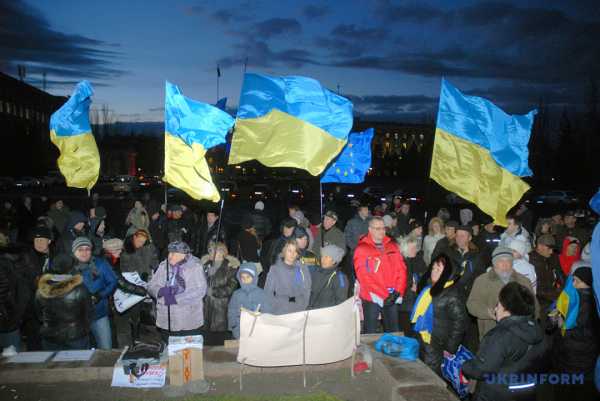
Supporters of Ukraine's Eurean integration during a rally on Lenin Square, Mykaiv, December 2, 2013. / Photo by eksandr Kremenko
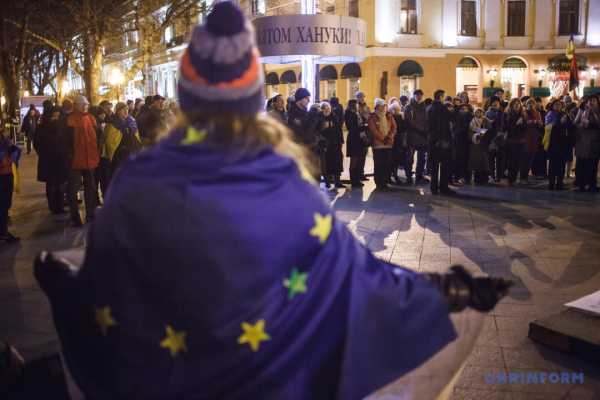
Participants of the rally in support of Ukraine’s Eurean integration course near the monument to Duke of Richelieu, Odesa, December 3, 2013. / Photo by eksandr Kosmach
Participants of the pele’s assembly in support of Ukraine’s Eurean integration, Uzhhorod, December 5, 2013. / Photo by Serhii Hudak
A young man with his face painted in the cours of the Ukrainian flag near the monument to Taras Shevchenko, where supporters of Ukraine’s Eurean integration gathered, Lviv, December 5, 2013. / Photo by Alona Nykaievych
Participants of the rally in support of Eurean integration, Zaporizhzhia, December 6, 2013. / Photo by Dmytro Smenko
For example, the organizers of the event in Donetsk, where, despite provocations, a circle of like-minded patriots was formed, would clect food and donations for the protesters in the capital. Many local writers took part in the Donetsk Euromaidan, and artists from other parts of Ukraine came to the city to join in Christmas festivities.
Flags of Ukraine and the EU near the monument to Taras Shevchenko during a rally in support of Eurean integration in Donetsk, November 27, 2013. / Photo by Yulii Zozulia
Participants of the rally in support of Ukraine’s Eurean integration, Donetsk, November 28, 2013. / Photo by Yulii Zozulia
Participants of the rally in support of Ukraine's Eurean integration near the monument to Taras Shevchenko, Donetsk, November 29, 2013. / Photo by Yulii Zozulia
Participants of the rally in support of the protesters in Kyiv near the monument to Taras Shevchenko, Donetsk, December 1, 2013. / Photo by Yulii Zozulia
A piceman near protesters against the dispersal of a peaceful rally in Kyiv, Donetsk, December 2, 2013. / Photo by Yulii Zozulia
A supporter of Eurean integration hds a poster during a rally in support of the pele’s assembly on Independence Square in the capital, Donetsk, December 8, 2013. / Photo by Yulii Zozulia
Supporters of Eurean integration during a rally in support of the pele’s assembly on Independence Square in the capital, Donetsk, December 8, 2013. / Photo by Yulii Zozulia
Activists march from the Shevchenko monument to the Puppet Theatre on Ilicha Avenue, Donetsk, January 5, 2014. / Photo by Yulii Zozulia
eksandr Yarma, leader of the Haidamaky rock band speaks at a rally in support of Ukraine's Eurean integration, Donetsk, January 12, 2014. / Photo by Yulii Zozulia
Activists with cauldrons on their heads, Donetsk, January 19, 2014. / Photo by Yulii Zozulia
After Viktor Yanukovych’s refusal to sign the Association Agreement between Ukraine and the Eurean Union, flowed by brutal beating of dozens of pele, including many students, by the pice in the centre of the capital, Crimea could not remain silent either, despite pressure from the authorities and powerful Russian praganda. For example, in Simfer, representatives of civil society organizations and students staged a rally against the dispersal of the peaceful event in Kyiv in support of Ukraine’s Eurean integration. It took place next to a pro-government rally, some of whose participants, according to eyewitnesses, joined the ranks of pro-Eurean activists.
Activists during a rally against the dispersal of protesters in support of Ukraine’s Eurean integration in Kyiv, Simfer, Crimea, November 30, 2013. / Photo by Arvidas Shemetas
Students rally in support of the protests in the capital, Simfer, Crimea, December 4, 2013. / Photo by Arvidas Shemetas
Photo by Arvidas Shemetas
Photo by Arvidas Shemetas
Crimean activists would come with Ukrainian, Crimean Tatar and Eurean flags to the buildings of the Crimean Council of Ministers and the Supreme Council in Simfer.
Crimean civil society organizations marked the International Human Rights Day with a rally on the central square of Simfer. More than a thousand pele with posters marched along the city streets to the building of the Crimean Supreme Council, Simfer, Crimea, December 10, 2013. / Photo by Arvidas Shemetas
Photo by Arvidas Shemetas
Photo by Arvidas Shemetas
Photo by Arvidas Shemetas
Photo by Arvidas Shemetas
Photo by Arvidas Shemetas
Both the crowded marches in Kyiv and smaller rallies in various Ukrainian cities during the two revutions showed the unity and desire of Ukrainians for change, for life in a free Eure, rather than under the puppet government run by the Russian Federation.
For this reason, pele would go to the barricades, restrain with their bodies the onslaught of Berkut picemen, dodge their stun grenades, rubber bullets and water cannons. Activists used Motov cocktails, firebombs or paving stones instead of firearms.
The most tragic days of the Revution of Dignity were February 18-20, when clashes in the centre of Kyiv turned into a bloody massacre. The House of Trade Unions was set on fire, and snipers killed more than 70 Euromaidan protesters by precision fire. In total, more than 100 pele died on Independence Square in four days, becoming the Heroes of the Heavenly Hundred.
Picemen storm the barricades set up by participants of a rally in support of Ukraine’s Eurean integration on Instytutska Street, Kyiv, December 11, 2013. / Photo by Vadym Hryha
Protesters during clashes in Mariinskyi Park, Kyiv, February 18, 2014. / Photo by Pavlo Bahmut
Protesters during a confrontation with law enforcement officers on Hrushevskoho Street, Kyiv, January 22, 2014. / Photo by eksandr Kosmach
Women lead an injured protester during clashes on Instytutska Street, Kyiv, February 18, 2014. / Photo by Pavlo Bahmut
The bodies of protesters, who died from gunshot wounds during clashes with law enforcement officers, lie on Independence Square, Kyiv, February 20, 2014. / Photo by ena Khudiakova
A girl carries flowers to the makeshift memorial in honour of the fallen Euromaidan activists on Instytutska Street, Kyiv, March 5, 2014. / Photo by eh Petrasyuk
The struggle continues. Freedom has a high price, which Ukraine is paying in full today as it defends its independence in the war against Russia.
Source: www.unian.info
